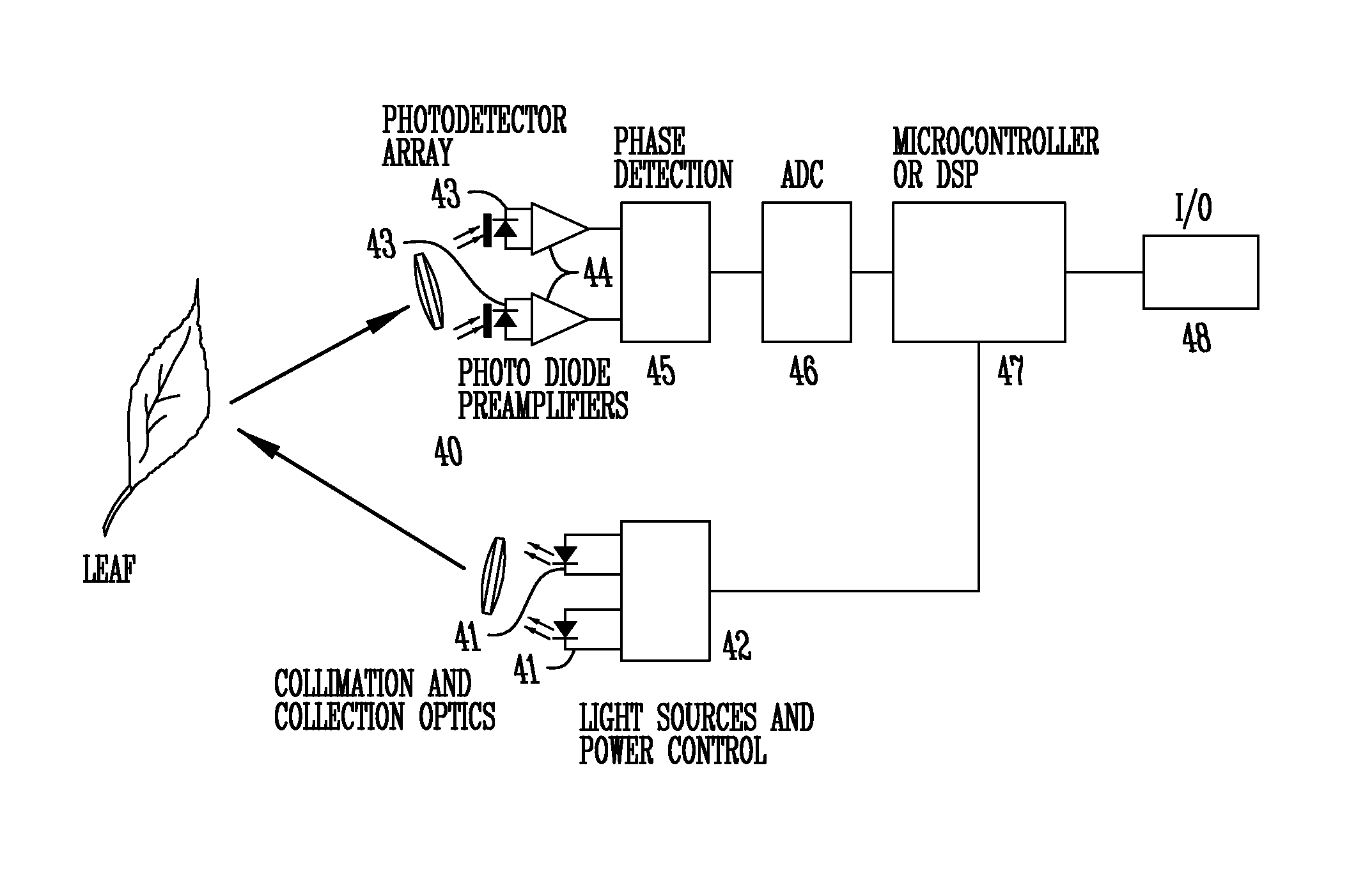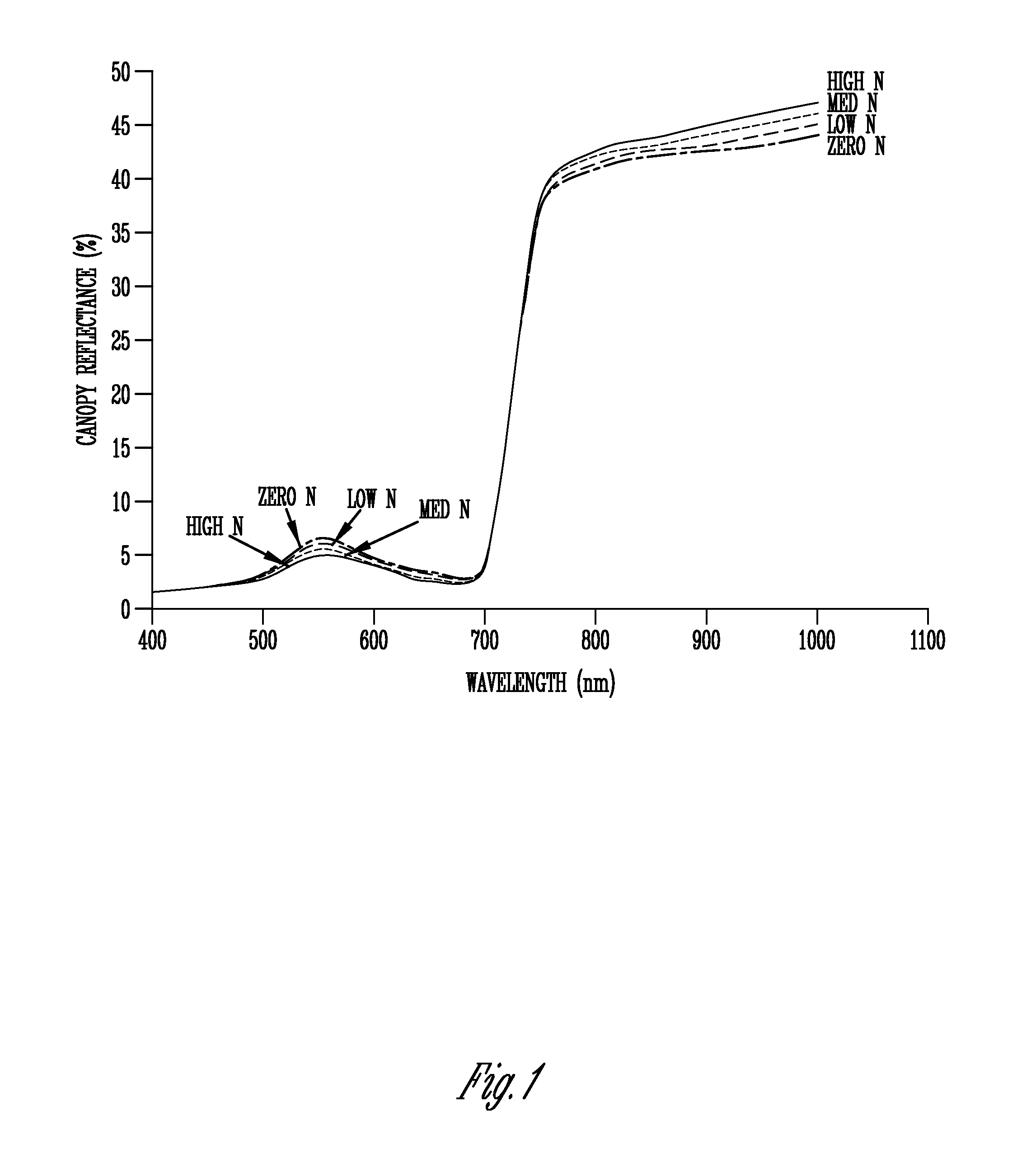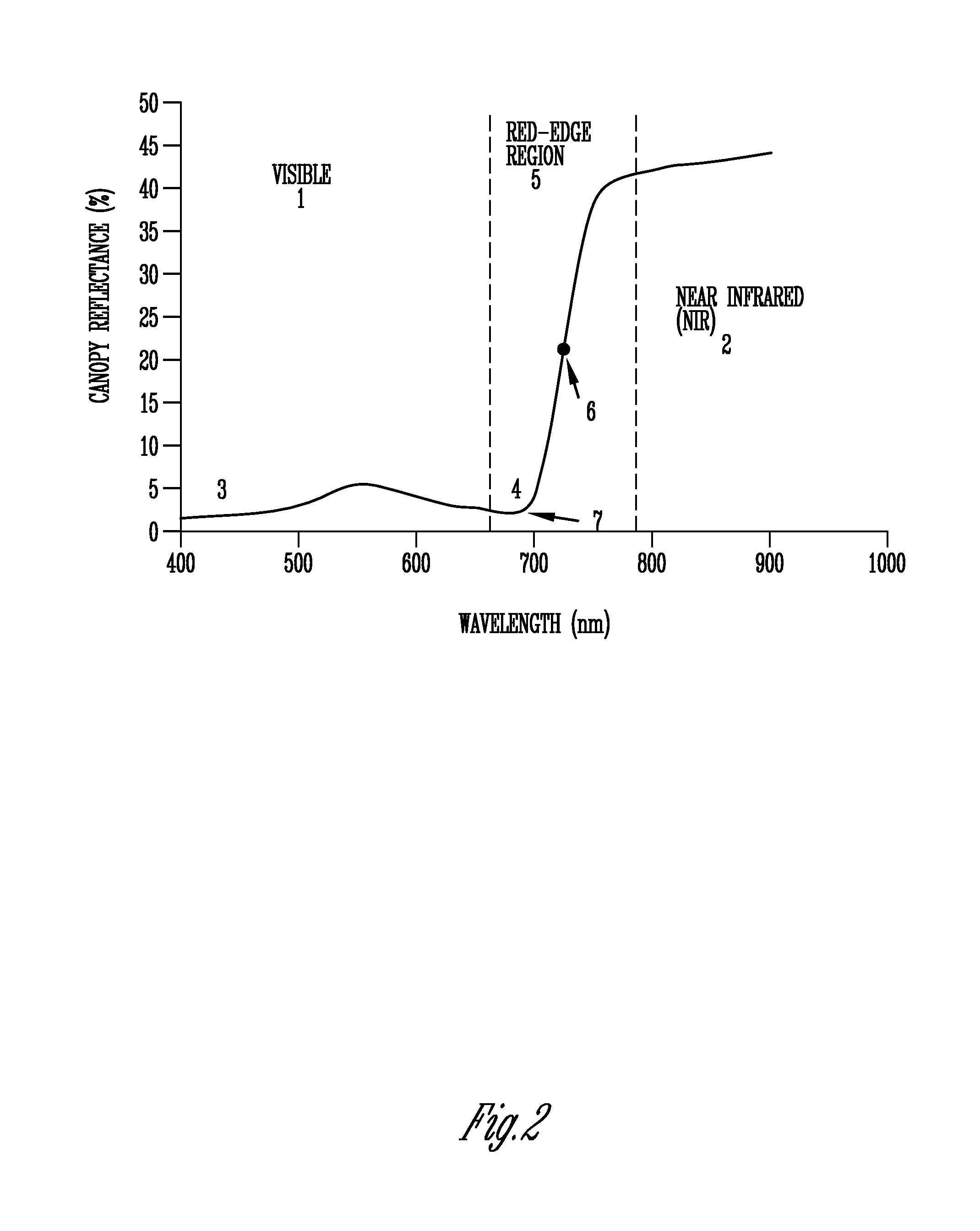Plant treatment based on a water invariant chlorophyll index
a plant treatment and chlorophyll technology, applied in the field of plant treatment based on water invariant chlorophyll index, can solve the problems of poor spatial resolution of satellite imagery, adverse effects of cloud cover on visibility, and similar problems afflicting aerial photographic methods
- Summary
- Abstract
- Description
- Claims
- Application Information
AI Technical Summary
Benefits of technology
Problems solved by technology
Method used
Image
Examples
Embodiment Construction
[0033]The following contains a description for a sensor that remotely measures plant canopy chlorophyll content independent of soil reflectance and ambient illumination levels. The sensor can be used in stand-alone instrumentation configurations or in a network of sensors mounted to a vehicle or moving apparatus for on-the-go remote sensing applications. The following description of the invention is meant to be illustrative and not limiting. Other embodiments will be obvious in view of this invention.
[0034]The positive relationship between leaf greenness and crop nitrogen (N) status means it should be possible to determine crop N requirements based on reflectance data collected from the crop canopy (Walberg et al., 1982; Girardin et al., 1985; Hinzman et al., 1986; Dwyer et al., 1991) and leaves (McMurtrey et al., 1994), see FIG. 1. Plants with increased levels of N typically have more chlorophyll (Inada, 1965; Rodolfo and Peregrina, 1962; Al-Abbas et al., 1974; Wolfe et al., 1988) ...
PUM
| Property | Measurement | Unit |
|---|---|---|
| center wavelengths | aaaaa | aaaaa |
| center wavelengths | aaaaa | aaaaa |
| center wavelengths | aaaaa | aaaaa |
Abstract
Description
Claims
Application Information
 Login to View More
Login to View More - R&D
- Intellectual Property
- Life Sciences
- Materials
- Tech Scout
- Unparalleled Data Quality
- Higher Quality Content
- 60% Fewer Hallucinations
Browse by: Latest US Patents, China's latest patents, Technical Efficacy Thesaurus, Application Domain, Technology Topic, Popular Technical Reports.
© 2025 PatSnap. All rights reserved.Legal|Privacy policy|Modern Slavery Act Transparency Statement|Sitemap|About US| Contact US: help@patsnap.com



